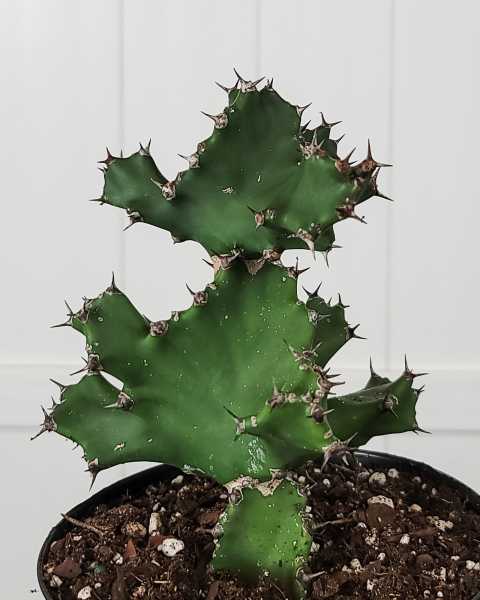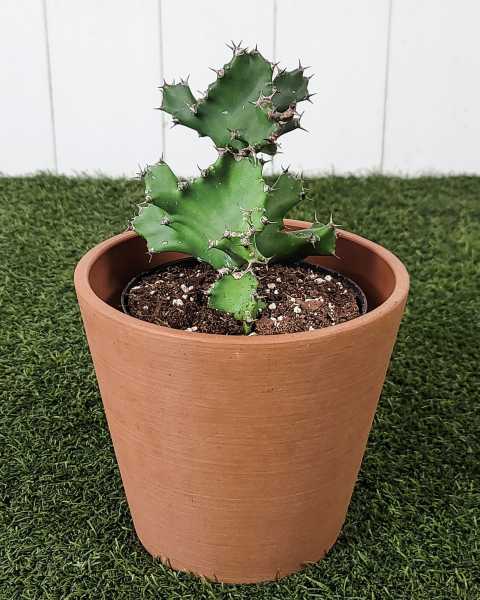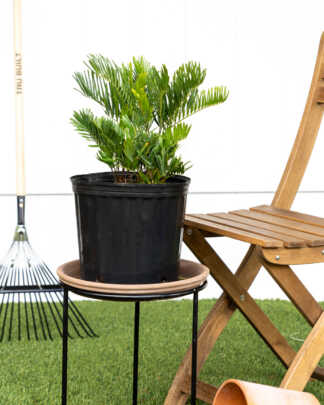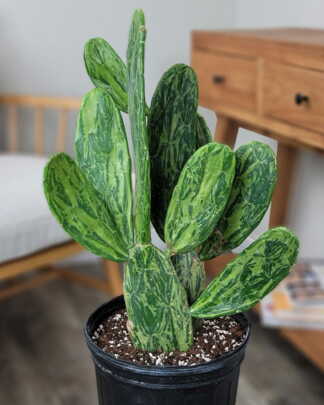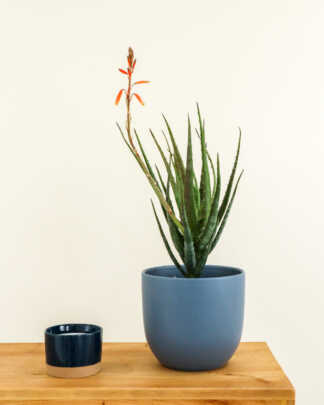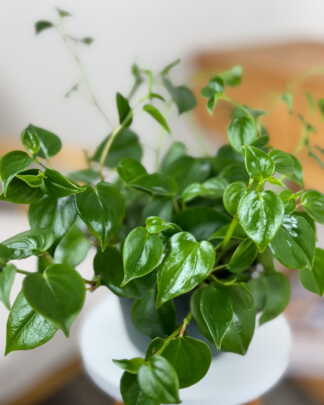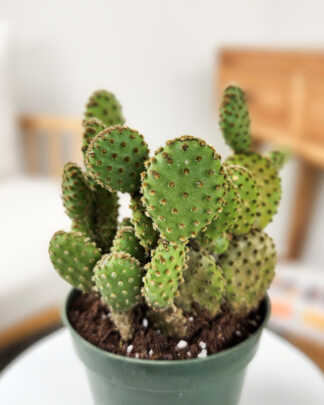Description
Caring for your Euphorbia
Euphorbia is a genus of succulent plants, often mistaken for cacti, due to their similar appearance. However, Euphorbias are distinct, belonging to the spurge family (Euphorbiaceae). Euphorbia species vary widely, with some resembling classic cacti, but all produce a toxic, milky sap.
Light
Euphorbia cacti thrive in bright, indirect light. While they can tolerate periods of direct sunlight, prolonged exposure to intense midday sun may cause sunburn, especially if they have not been gradually acclimated. These plants do well in areas with abundant natural light, such as sunny windowsills or bright patios.
Place your Euphorbia near a south or west-facing window where it will receive plenty of light. However, ensure it’s filtered or indirect light for extended periods. If your plant starts to stretch out or become leggy, it’s a sign it’s not getting enough light. Consider using grow lights during winter or in low-light environments.
Water
The most crucial aspect of Euphorbia care is getting the watering schedule right. Like other succulents, Euphorbia plants are drought-tolerant and store water in their stems. Overwatering can lead to root rot and fungal infections, so it’s important to allow the soil to dry between waterings. Let the water soak through the soil and drain out the bottom. Make sure the pot has drainage holes to prevent water from pooling at the bottom.
In spring and summer, water once every 2-3 weeks, depending on how fast the soil dries out. Always test the soil’s moisture level by inserting your finger about 2 inches into the soil. If it feels dry, it’s time to water. In fall and winter, reduce watering to once a month or less, as the plant enters a dormant phase and uses less water. Avoid letting water sit on the plant’s stem, as prolonged moisture can lead to fungal infections.
Soil
Euphorbia cacti need well-draining soil to mimic their native arid environments. A regular succulent or cactus potting mix will work well for your plant.
Since Euphorbia plants grow slowly, they don’t require frequent repotting. Choose a pot one size larger than the current pot when repotting, and be cautious when handling the plant to avoid contact with the toxic sap.
Fertilizing
Euphorbias are not heavy feeders, but they benefit from occasional fertilizing, especially during their growing season in the spring and summer. Use a balanced, water-soluble fertilizer diluted to half-strength once a month during the growing season. A cactus or succulent fertilizer will work well. Avoid fertilizing in the fall and winter when the plant is dormant. Too much fertilizer during this time can lead to weak growth and poor overall health.
Pruning and Maintenance
Euphorbia plants generally maintain their shape with minimal pruning, but occasional trimming may be needed to remove dead or damaged sections. Use a clean, sharp knife or pruning shears, and wear gloves to protect yourself from the sap.
- Cut at the joints, where the branches naturally separate. The plant will heal and form a callus over the cut.
- Clean your tools after pruning to avoid spreading diseases.
Important Note: The sap of Euphorbia plants is toxic if ingested and can cause skin irritation. Always wear gloves and eye protection when handling or pruning your plant. Keep Euphorbia out of reach of pets and children to prevent accidental ingestion.

